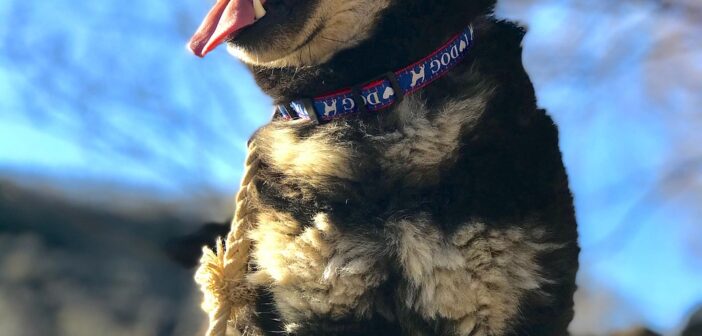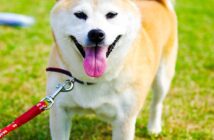Table of Contents
- Introduction
- Understanding Shiba Inus: What to Expect
- Puppy-Proofing Your Home
- Managing Escape Artists: Fencing, Doors & More
- Apartment vs. House: Setup Strategies
- Crate & Sleeping Area Setup
- Toys, Food & Supplies Checklist
- Case Study: From Chaos to Calm – Max’s Story
- Expert Insights: What Rescue Volunteers Want You to Know
- Final Thoughts & Action Steps
1. Introduction
Adopting a rescue Shiba Inu is rewarding, but they can be a handful—especially if you’re not ready. These compact, fox-like dogs are independent, strong-willed, and often highly energetic. If you’re wondering how to prepare for an adopted Shiba Inu, this guide will help you set up your space, manage their quirks, and avoid costly or dangerous mistakes.
2. Understanding Shiba Inus: What to Expect
Shibas are known for their intelligence, cleanliness, and… selective listening. Expect:
- A tendency to bolt when off-leash
- Aloof behavior with strangers
- Territorial guarding (especially food or space)
- High prey drive (watch for squirrels and cats!)
- Occasional “Shiba screams” when unhappy
💡 Quick Fact: According to the American Kennel Club, Shiba Inus are the most popular companion dog in Japan and are ranked No. 43 in the U.S. source
3. Puppy-Proofing Your Home
Whether your Shiba is a puppy or adult, prepping your home is essential. Many rescues recommend treating them like toddlers at first.
🛠 Key Puppy-Proofing Steps:
- Hide electrical cords behind furniture or use cord protectors.
- Secure trash cans with locking lids—Shibas are clever raiders.
- Use baby gates to block stairways or off-limits rooms.
- Keep meds, cleaning supplies, and human food locked away.
- Remove choking hazards: rubber bands, socks, small toys.
🔍 Expert Insight:
“Shibas are agile and curious. One foster jumped on the kitchen counter on day one,” says Samantha Ruiz, a volunteer with Shiba Rescue of New Jersey. “Don’t assume they’ll respect barriers like other dogs do.”
4. Managing Escape Artists
Shibas are known for slipping collars, opening doors, and even climbing fences. Preparation is your best defense.
🛡 Tips to Prevent Escapes:
- Use a Martingale collar for walks (helps prevent slipping out).
- Install self-closing gates with tall fences (at least 6 feet high).
- Secure all doors and windows with childproof latches.
- Keep your Shiba on leash at all times outdoors, even in fenced yards initially.
- Consider GPS trackers like Fi or Whistle Go Explore for peace of mind.
💬 Case Example:
Josh from Colorado shared, “Our Shiba bolted through a screen door and ran across a four-lane road. After that, we reinforced all exits and added a Ring camera to monitor him.”
5. Apartment vs. House: Different Challenges
Both living environments can work for Shiba Inus—but your setup needs to match their needs.
🏠 If You Live in a House:
- Fence in your yard with dig-proof lining.
- Create a designated potty area to help with training.
- Consider motion lights and cameras for added safety.
🏢 If You Live in an Apartment:
- Train your Shiba on elevator or stair routines.
- Choose quiet walking paths to reduce reactivity.
- Use calming diffusers like Adaptil if your dog is anxious.
- Offer mental stimulation toys if you’re away during the day.
📊 Did You Know?
A 2023 survey from the Humane Society found that over 48% of rescue dog returns were due to behavior-related challenges in apartment settings. Prep can make a huge difference.
6. Crate & Sleeping Area Setup
A crate isn’t punishment—it’s a sanctuary. For anxious or newly rescued Shibas, it helps them feel safe.
🛏 Crate Setup Must-Haves:
- Use a 36-inch wire crate with a soft pad or bed.
- Place it in a quiet, low-traffic area.
- Cover it partially with a blanket to create a “den effect.”
- Never use the crate for punishment.
🐾 Add a calming chew, like Benebone or frozen Kong, to encourage positive association.
7. Supplies Checklist
Here’s what you’ll need before your Shiba comes home:
| Item | Recommendation |
|---|---|
| Collar + Tag | Martingale + ID with your number |
| Harness + Leash | Escape-proof harness like Ruffwear Front Range |
| Dog Crate | 36” crate with dual-door access |
| Food | Ask rescue what they currently eat |
| Bowls | Stainless steel (non-tip) |
| Toys | Puzzle feeders, chew-safe toys |
| Grooming Tools | Slicker brush, nail clippers, shampoo |
| First Aid Kit | Pet-safe essentials + vet info sheet |
| Calming Products | Diffuser, thundershirt, calming treats |
📥 Free Download: Rescue Shiba Inu Starter Checklist (PDF)
8. Case Study: From Chaos to Calm – Max’s Story
Max was a 4-year-old rescue pulled from a hoarding case in Florida. His new family in Oregon didn’t realize how much work he’d be. Within 48 hours, he’d:
- Escaped through a cracked window
- Barked for 3 straight hours when left alone
- Guarded food so aggressively the family almost gave up
They reached out to Shiba Inu Rescue Association and followed expert advice. With time, training, puzzle feeders, and leash walks, Max became calmer and even learned to share space with the family’s cat.
🎙️ “We almost returned him. But once we started meeting his needs, everything changed,” says adopter Angela M..
9. Expert Insights: What Rescue Volunteers Want You to Know
📣 Advice from the Front Lines:
- “Don’t let the cuteness fool you—Shibas are smart, but they test boundaries.” – Laura T., Midwest Shiba Rescue
- “Prepare before, not after. You’ll save yourself and the dog a lot of stress.” – Chris D., Foster Dad in Georgia
- “Set up a vet appointment in the first week, even if healthy. Rescue dogs need full checks.” – Dr. Jamie Black, DVM, California
10. Final Thoughts & Action Steps
Preparing your home for a rescue Shiba Inu is a mix of safety, patience, and proactive planning. From puppy-proofing and fencing to emotional recovery and routine building, every step matters.
✅ Next Steps:
- Download the starter checklist
- Buy escape-proof gear
- Setup a crate and calm space
- Book a vet and behavior consult
- Be patient—it’s a journey!



